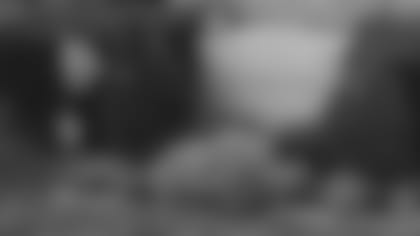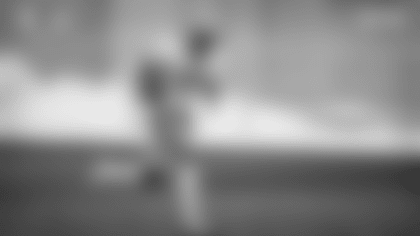GREEN BAY—If you're prone to wanderlust, here are my best discoveries of places outside Wisconsin that are tied to Packers history. Only sites I've personally visited are included.
1. Vince Lombardi's Gravesite (Middletown, N.J.) – Lombardi and his wife, Marie, are buried here in sprawling Mount Olivet Cemetery. Their modest headstone is partly concealed by shrubs, but when you come across the Lombardi inscription, it's no less awe-inspiring. First names and dates appear in smaller letters at the bottom of the headstone.
2. Spartan Municipal Stadium (Portsmouth, Ohio) – The Packers played here three times in the early 1930s. The former home of the Portsmouth Spartans, it opened as Universal Stadium in 1930 and, at one point, seated 8,200. Designated an Ohio historical site, the marker outside what is now a high school stadium reads in part: "The most famous game played at Universal was on December 4, 1932. The Spartans with just eleven men defeated the world-champion Green Bay Packers 19-0. In Portsmouth, the game is simply known as 'The Iron Man Game.'" There's also a large mural dedicated to the Spartans along the Ohio River in downtown Portsmouth. http://www.ohiorivertourism.org/murals56.jpg
3. Seven Blocks of Granite Monument (New York City) – The monument is located on the Fordham University campus in The Bronx, but it's not just the monument that makes a visit here worth a special trip. It's the lush and picturesque campus that probably hasn't changed much since Lombardi's college days, based on the age of the buildings. The monument honors the school's famous "Seven Blocks of Granite" line from the 1936 and '37 seasons that Lombardi was a part of, as was former Packers end Harry Jacunski. Also recognized is Jim Crowley, an all-time great at Green Bay East High School and the University of Notre Dame, who coached Lombardi at Fordham. The monument is located next to Rose Hill Gym, another campus landmark. The 3,200-seat fortress opened in 1925 and is still the home of Fordham's basketball teams.
4. A.J. McClung Memorial Stadium (Columbus, Ga.) – Built in 1916, the stadium seats 15,000 and was where the Packers played the Washington Redskins in preseason games in 1961 and '62. A third game scheduled for 1963 was moved to Cedar Rapids, Ia., a little more than a month before it was to be played, over concerns about segregated seating. What's special about the place in terms of Packers lore is that before the '61 and '62 games Lombardi housed his players in the barracks at nearby Fort Benning, rather than have his black players stay at a different hotel than their white teammates.
5. University of Minnesota North Central Research and Outreach Center (Grand Rapids, Minn.) –From 1951-53, when it was known as the North Central School of Agriculture, the Packers trained here and practiced on a field that was once a cow pasture. In fact, players from back then remembered cows, hogs and horses still being in their midst, and mosquitoes as big as birds feasting on them in the dormitory at night. The players would report to Green Bay then take a 400-mile, seven-hour-plus bus ride to Grand Rapids -- or what former linebacker Deral Teteak described as "the end of the world." It was former coach Gene Ronzani's idea to train here and part of it might have been that he liked to fish. In fact, players remembered him skipping practice one day to go fishing.
FIVE MORE…
1. Sorin Hall (South Bend, Ind.) – Built in 1888 and named after Notre Dame's founder, Rev. Edwin Sorin, it was Curly Lambeau's dorm when he played for Knute Rockne's 1918 Notre Dame football team.
2. Philander Smith College (Little Rock, Ark.) – This historically black college's only gift to the NFL was Elijah Pitts, a running back for the Lombardi Packers. When he was drafted in the 13th round in 1961, back when there were true sleepers and selections were made in a hotel ballroom, one wag from another team asked the crew at the Packers' table: "Is that Elijah Pitts from Philander Smith or Philander Smith from Elijah Pitts?" The school dropped football three years after Pitts left, but the small campus in the heart of Little Rock still bears resemblance to when he went to school there. Not far from the campus is War Memorial Stadium, which opened in 1948 and was where Pitts played most of his collegiate games.
3. Kezar Stadium (San Francisco) – The Packers played the 49ers here every year from 1950 through 1966 and again in 1968 and '70. At a time when most NFL teams played in baseball stadiums, Kezar was a football oval that seated nearly 60,000 and included, among other distinctive features, a concrete arch entrance. Located in Golden Gate Park, Kezar was demolished in 1989 and rebuilt with 10,000 seats, but the place still radiates some of the charm of the original. Nearby is Kezar Pub, which essentially serves as a museum for the old stadium.
4. Kiln, Miss. – Kiln is to the Packers what three other dots on the map are to three other storied franchises: Commerce, Okla., (Mickey Mantle), the NY Yankees; Cabin Creek, W. Va. (Jerry West), LA Lakers; and French Lick, Ind. (Larry Bird), Boston Celtics. There isn't much to see in Kiln – population, 2,238 – but the bronze statue of Brett Favre at the entrance to Brett Favre Field at Hancock High School would probably be at the top of the list. That or the Broke Spoke bar, maybe Kiln's most famous landmark.
5. Canadian Football Hall of Fame (Hamilton, Ontario) – Like many kids growing up in Green Bay, I'd pick out a favorite rookie each year during camp and root for him to make the team. My favorite in 1959 was halfback George Dixon; in 1960, it was receiver Garney Henley. Neither one made it, but both were inducted into the CFL's Hall of Fame. Former Packers quarterback Jack Jacobs and current offensive coordinator Tom Clements also are in the Hall.
….AND FIVE MORE
1. Cramton Bowl (Montgomery, Ala.) – It opened in 1922 and was where Bart Starr played football for the Sidney Lanier High School Poets. Starr also played in the Cramton Bowl in the 1955 Blue-Gray Game. The Blue-Gray was played here from 1939 through 2001. Recently renovated, the stadium seats 25,000. Two miles away is Lanier High. It had to be one of the most imposing high school buildings in Alabama when it was finished in 1929, but is badly in need of repair today.
2. Liston Stadium (Baldwin City, Kan.) – Built in the 1930s and enclosed on the north and west sides by a stone fence that was erected at the same time, it's the home of the Baker University football team and where Mike McCarthy played his college ball. The stadium might be small and look new in every other way due to renovations, but the stone fence provides some ageless charm.
3. Hersheypark Stadium (Hershey, Pa.) – This 15,641-seat stadium opened in 1939 and was the site of a Packers-Philadelphia Eagles preseason game in 1954. Milton Hershey, founder of the Hershey Co., had aspirations at one time of landing an NFL franchise and joining Green Bay as a second small city. As a bonus, the Hershey Sports Arena where Wilt Chamberlain scored his record 100 points in an NBA game is across a parking lot.
4. Bowman Gray Stadium (Winston-Salem, N.C.) –The stadium opened in 1937 and was once home to Wake Forest University's football team. The Packers played preseason games at Bowman Gray from 1955-'60, when it seated close to 25,000. Today, it's home to Winston-Salem State's football team and also a quarter-mile NASCAR track.
5. Memorial Stadium (Latrobe, Pa.) – In 1952, a year after it opened, the Packers played the Pittsburgh Steelers here in a preseason game that drew 10,000 fans. Better yet, there's a good story behind the stadium and that game. In 1947, the NFL granted Latrobe permission to build a Hall of Fame. The city never followed through and eventually lost out to Canton, but it built a stadium for its high school team with the hope that eventually it would be the site of an annual Hall of Fame game. Had that happened, the '52 Packers-Steelers game might have been viewed as the first. At the time, Latrobe was considered the birthplace of pro football. That has since been disproven, but there is a plaque near the main gate of the 8,000-seat, brick stadium making that claim. The plaque was dedicated in 1960.
(Note: The Pro Football Hall of Fame in Canton has an abundance of Packers artifacts along with the busts of the team's Hall of Famers and isn't on the list only because it would be the obvious No. 1 choice.)















